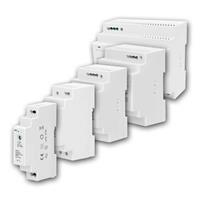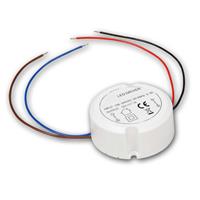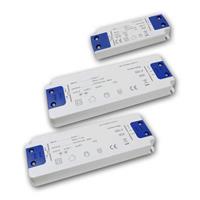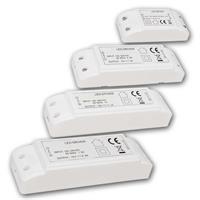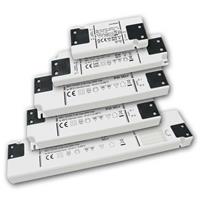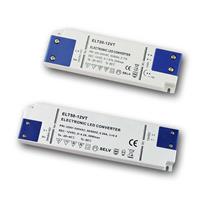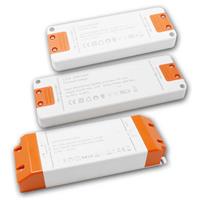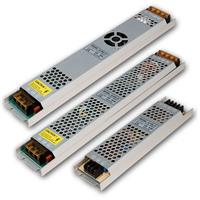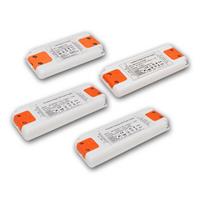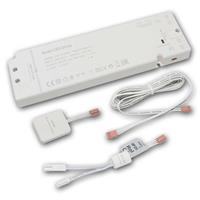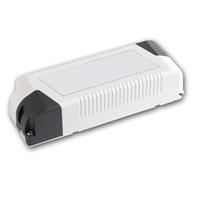Direct current transformer
DC transformers are specially designed for LED lighting with an input voltage of 12 or 24 volts. These are electronic transformers and are also referred to as LED drivers, LED ballasts or LED power supplies. They convert the house voltage of 230V, which is present in the German power grid, into the 12V AC (alternating voltage) required for the operation of the LEDs. This is the only way to ensure the correct function and long service life of LED lamps or LED lamps without an integrated rectifier, since they would only glow or burn out directly if connected to 230V. Depending on the area of application, direct current transformers are available as "Trafo Indoor" (indoor area), "Trafo Outdoor" (waterproof for outdoor use with protection class IP65 or IP67) or as "Transformer for DIN rails" for placement in fuse boxes.
Comparison of direct current transformer and electronic ballast (EVG)
Halogen lights often already have an electronic ballast (EVG). If these are to be exchanged for energy-saving LED lamps, the question often arises as to whether the existing transformer must be exchanged. Electronic ballasts require a minimum load for operation so that the output voltage levels out exactly. While this is negligible for halogen lamps and does not limit functionality, voltage spikes with LED lamps can cause them to just glow, hum, flash or burn out immediately. In order to be able to enjoy the new LED lighting for a long time, existing electronic ballasts (EVG) should always be replaced with LED direct current transformers.
How is the correct power of the LED transformer determined?
To determine the correct power of the required LED transformer, in addition to the total power of the LED lamps to be used, a reactive power of at least 30% (comes from the mains and flows back there again) must be taken into account.
In order to determine the total output of the LEDs, the individual output of each LED light source must be added up. If, for example, 6 lamps with 3 watts each are to be used, this results in a total output of 18 watts. The reactive power of 30% results in 6 watts and therefore an LED power supply unit with at least 24 watts is required. If a more powerful LED ballast is used, the LEDs can be expanded in the future or replaced with lamps with a higher output.

